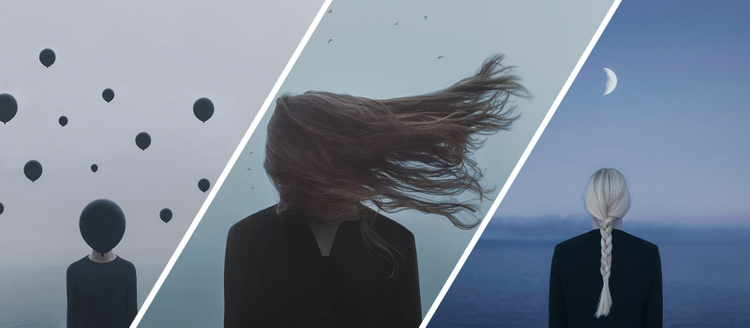Understanding Mental Health Through Digital Art With Gabriel Isak

Invisible, unspoken and often ignored, mental illness carries a stigma that restricts recovery and disrupts progress. Despite recent improvements in diagnosis, treatment and understanding, there’s still a long way to go when it comes to how modern-day society approaches mental health. An important yet simple step along the path to creating a more mentally healthy world is awareness. In light of the 27th World Mental Health Day, as well as the 29th Mental Illness Awareness Week, individuals and organizations across the globe are banding together to bring awareness into the public conscious. For Swedish artist Gabriel Isak, who uses his imagery to shine a light on mental health issues, this is one of the most important times of the year.

Gabriel’s first foray into photography and digital art was in high school when he picked up a small, compact camera. At first, he didn’t take the art very seriously, and, like most of us, when he first started snapping photos of his surroundings, he wasn’t great. Still, he enjoyed playing around and experimenting with his newfound hobby. When a friend turned him onto Photoshop, he started playing with photo editing, too. He would manipulate the shapes and colors of his images, though, as he readily admits, he was quite amateur at the time.
“At the same time that I started going through the introduction to my depression, I started to do a lot of self-portraits—much darker images than I have today,” Gabriel shares.
While his photography and digital art skills improved, Gabriel started experiencing mental health challenges. In Sweden, where Gabriel is from, “mental illness and depression are more common, and there are high rates of seasonal affective disorder” according to Gabriel. Yet, despite its widespread reach in Sweden (and across the world), Gabriel says, “mental illness is still stigmatized” to the point that most people experiencing it are afraid or ashamed to talk about it. Finding it difficult to speak about his illness out loud, Gabriel let his art become his means of self-expression. With an unseen and unsaid depression, Gabriel says his imagery “became very dark.” He created self-portraits depicting the anguish and despair of his inner world.

However, the realities of mental illness are not all about the tortured beauty these works of art express. Depression isn’t simply a feeling that helps you produce moody imagery. In fact, many people experiencing mental illness stop creating altogether. As Gabriel’s depression progressed, he says that parts of his creativity seemed to fade. Aspects of photography or photo editing he once found inspiring no longer interested him. Projects that used to fuel his passion barely caught his attention. Apathy had set in, muffling his dream to become an artist and coloring those things which were once exciting with a dull, depression-induced tinge.
“It’s difficult to create while you’re depressed,” Gabriel explains, “but once you start to, it’s almost the best source of therapy to create images like these.”
Gabriel knew he needed to address his depression, but it wasn’t easy. Instead of trying to live his life as normal, he needed to make time and space to address his mental illness. Taking an important step, he committed to therapy and slowly worked towards health.

It wasn’t until seven years later that Gabriel finally revisited his art. In a move towards recovery, he enrolled in art school in order to force himself back into a creative space. Pushing himself out of his comfort zone, Gabriel traveled to San Francisco where he attended the Academy of Art University. Soon, Gabriel recalls, “I realized that the images I was creating for my classes were very much inspired by the years that I lived with depression.”
Gabriel says, “My unconscious was still working through the years when I didn’t create anything, and my art became a therapy that allowed me to process my years with mental illness.”
It was through this art therapy that Gabriel finally became comfortable openly speaking about his depression. Now, Gabriel has realized his dream as a professional artist. Though he has recovered from his depression, he still takes care of his mental wellbeing while also advocating for others suffering from mental illness. He uses his tranquil, melancholy images to invoke questions in his audience and spread awareness about the realities of mental illness today.

According to the World Health Organization, one in four people around the world will be affected by mental illness in their lifetimes, but far fewer will feel safe or comfortable talking about it. In order to create a better world where mental illness is no longer stigmatized and ignored, it’s important to spread awareness on an individual level. This week, make it a point to talk about mental health, spread awareness, educate others and share Garbiel’s story! You never know who might need to hear it.